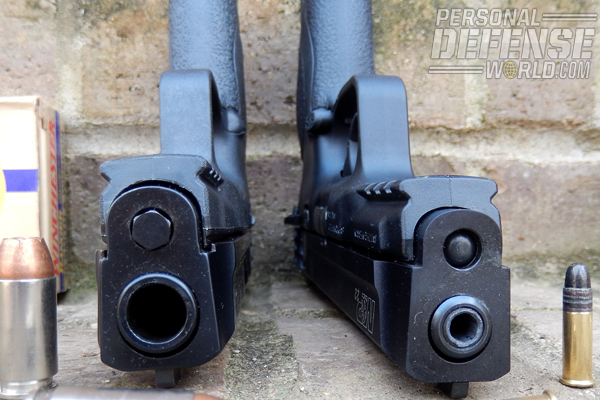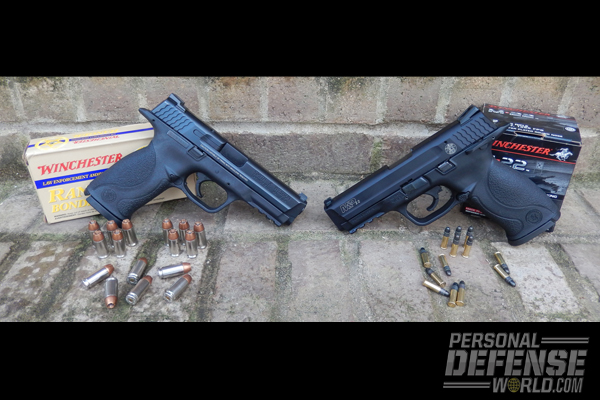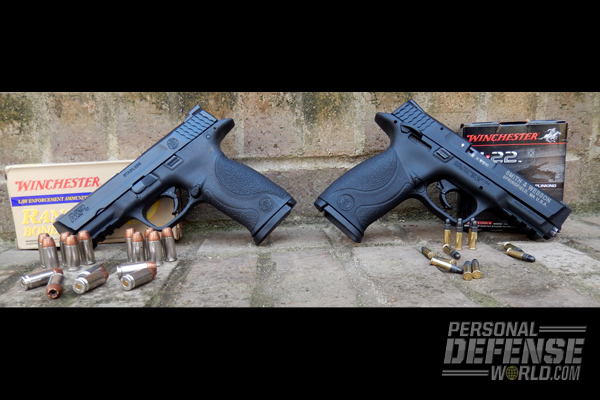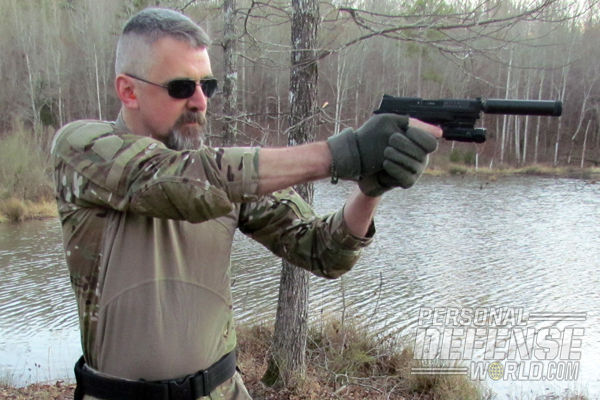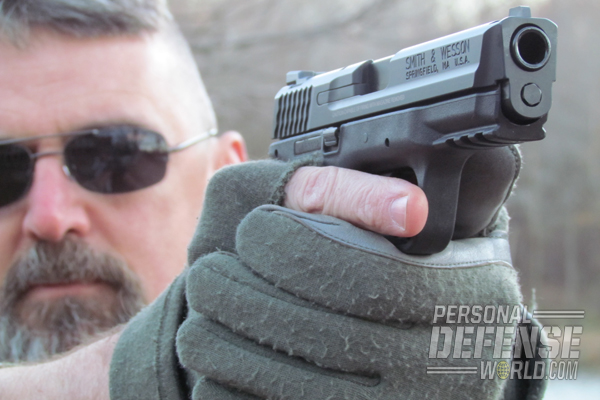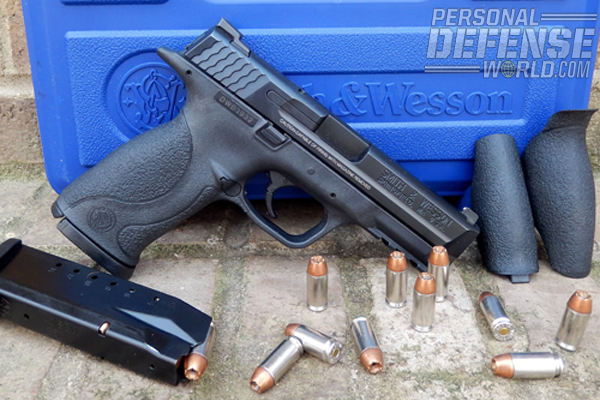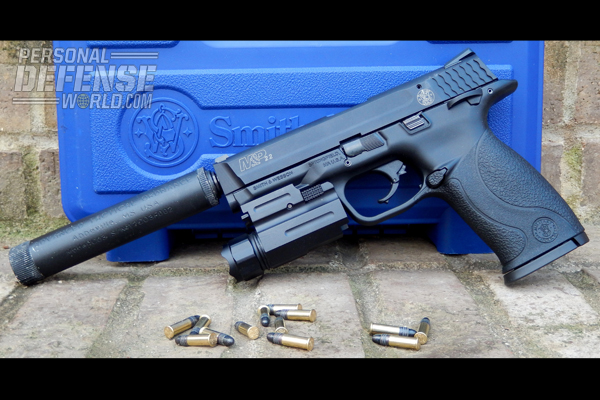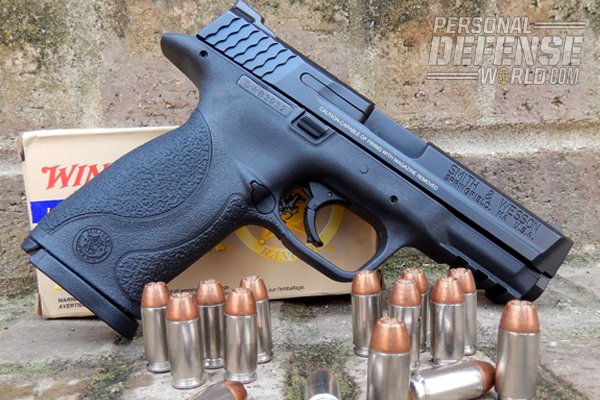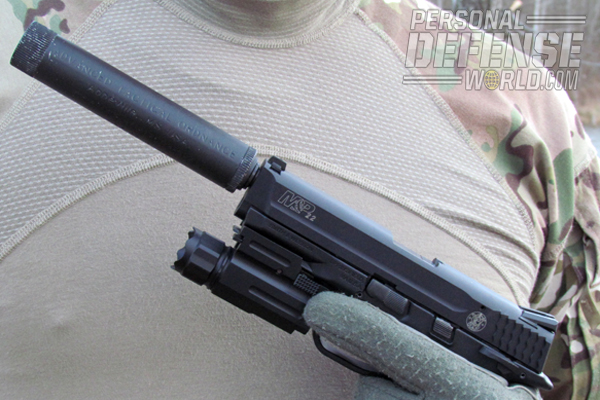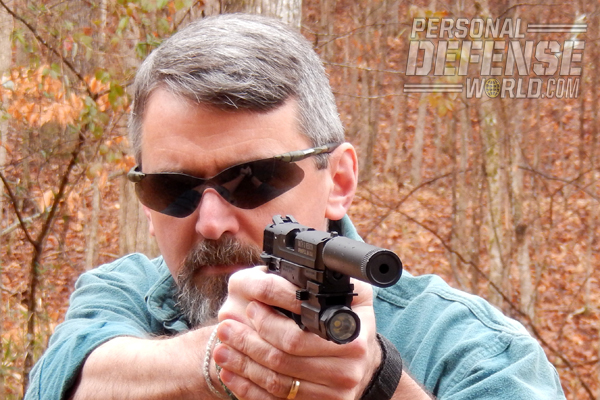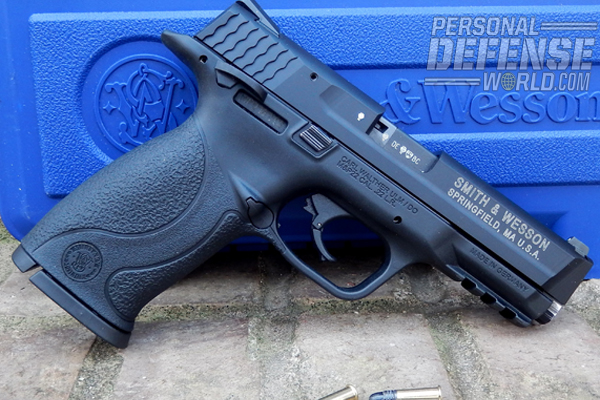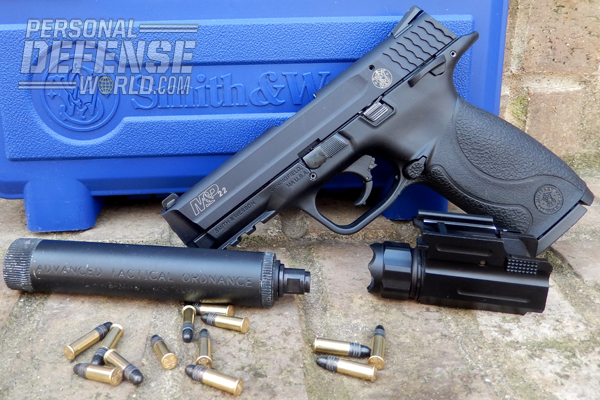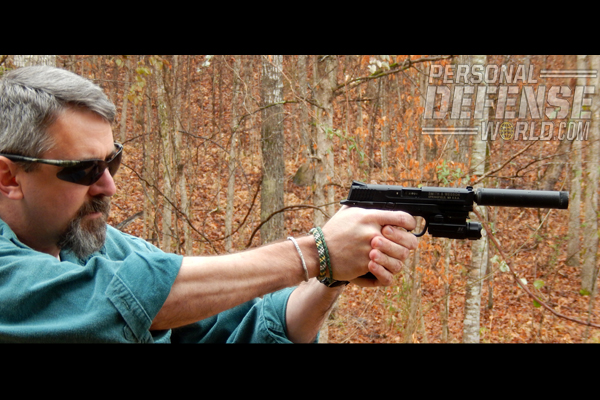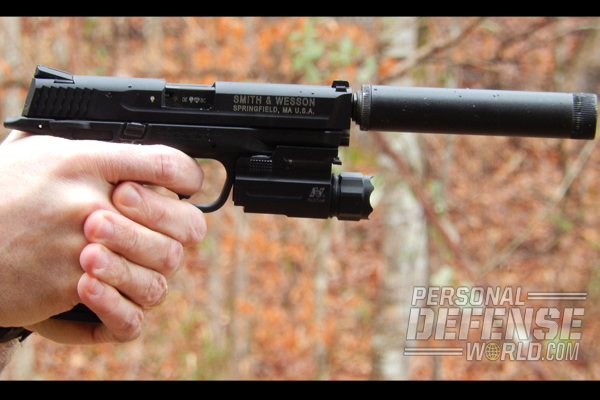Tactical shooting is a learned skill not unlike brain surgery, piano playing or juggling. If you hone your skills to a fine edge and then ignore them for a time, they will atrophy. Ignore them long enough, and the details get fuzzy. Midnight, when you’ve awoken to the sound of glass breaking in your home, is not the best time to be struggling to remember how your weapon works.
The way to keep sharp at anything from neurosurgery to tactical handgunning is to practice. Exercise your skills regularly and intensely, and your muscles will move of their own accord. In the case of tactical shooting, the sights automatically find your line of gaze, magazine changes require no conscious thought, and trigger management just happens. The downside is that, at upwards of 50 cents every time you stroke the trigger, practice gets expensive.
When I was a military aviator, a couple of times a year we would head off to the flight simulator. The simulator allowed us to do the weird, dangerous stuff we could never get away with in the real aircraft, and it set the Army back substantially less than the actual helicopter’s $2,000-per-hour operating cost. It was a relatively inexpensive simulation of tactical flying and a source of invaluable training. Fortunately, a similar venue exists for the shooter serious about his craft.
Advertisement — Continue Reading Below
M&P40

Despite a rocky start, polymer handguns are now de rigueur among U.S. shooters. Nowadays, Gaston Glock’s Teutonic marvel rides in the holsters of 65 percent of American law enforcement officers and every major gun company produces polymer-framed handguns. Smith & Wesson injects a decidedly American flavor into its offering.
Advertisement — Continue Reading Below
The original Smith & Wesson foray into the plastic handgun market, the S&W Sigma, left me clammy. It looked awesome, felt great and was just crazy cheap, but the trigger in particular just made me itch. Then I met the M&P40 and fell in love.
S&W’s Military & Police (M&P) tactical handguns are utterly reliable and indestructibly robust. They also come with interchangeable backstraps and the obligatory railed dust cover. The most appealing piece of the M&P design to me, however, is the grip-to-frame angle.
In this regard the M&P nicely approximates the general geometry of the 1911 and, to me at least, points just a little bit better than its popular Austrian cousin. Additionally, with the proper grip insert installed, the M&P feels perfect in my hands. The magazine release is reversible, and the striker-fired trigger system simply divine. There is a pivoting safety mechanism built into the trigger itself.
Advertisement — Continue Reading Below
Standard sights on the M&P40 are low profile and snag-free. Tritium inserts are available as options. The stainless slide comes in a black finish (the VTAC model comes in FDE), and with or without a magazine safety. The slide has nifty scalloped serrations that facilitate manipulation in the face of anxiety, sweat or both.
As an added bonus, once you acquaint yourself with the full-sized M&P family, you can spend some time hanging out with the little brother. He’s a fetching piece of work in his own right.
Advertisement — Continue Reading Below
M&P22

The market is awash in cool .22-caliber pseudo-tactical pistols. Taurus, Ruger, ISSC and Sig all produce handguns chambered in .22 LR that are cute as a button and fun to shoot. The only real problem is that few of them accurately replicate their big-bore brethren. The exception is the Smith & Wesson M&P22.
The greatest strength of the S&W M&P22 is that it is fairly big. Unlike most .22 pistols, the M&P22 is about the same size as the full-bore tactical version. This means that your hands find the controls naturally, and holster drills are literally seamless between the two platforms. Aside from recoil disparity, the simulator is about perfect.
Advertisement — Continue Reading Below
There are some trivial differences. The M&P22 does not have interchangeable backstraps, and it sports a discreet manual thumb safety that its larger sibling typically lacks. Additionally, the small-caliber version is hammer-fired, but the trigger pulls are not terribly dissimilar. The M&P22 sports a 12-round magazine as opposed to the 15-round version for the .40-caliber variant. These few bits of minutiae notwithstanding, the transition between the larger and smaller caliber platforms is flawless.
The smaller sibling actually boasts some unique capabilities. The barrel mounts in the same manner as that of the P22. This means that a cheap thread adaptor lets you drop any commercial .22 suppressor in place and run the gun without earmuffs. There is no better way to introduce a novice to the art of tactical handgunning than to use a suppressed .22 pistol. Additionally, as the rails are standard, your duty-use tactical light fits the smaller version as well. For folks like me who live on a rural farm, nothing attends to agrarian pests like a suppressed M&P22 with a tactical light.
Advertisement — Continue Reading Below
Final Thoughts

In today’s recession-laden economy, Americans have less disposable income than was once the case. When times are hard, frugality is its own reward.
For those serious shooters who wish to keep their tactical skills sharp, .22 LR cartridges cost a fraction of comparable centerfire loads. Both of these guns are utterly reliable and brilliantly executed while complementing each other splendidly. Until you pick one up, it can be tough to tell them apart in dim light. As such, the dynamic duo of the Smith & Wesson M&P40 and the M&P22 allow for easy and seamless practice without overly straining the family budget. If your family is like mine, that is a novel and effective way to maintain your tactical edge while simultaneously ensuring domestic tranquility.
Advertisement — Continue Reading Below
For more information, visit http://www.smith-wesson.com
